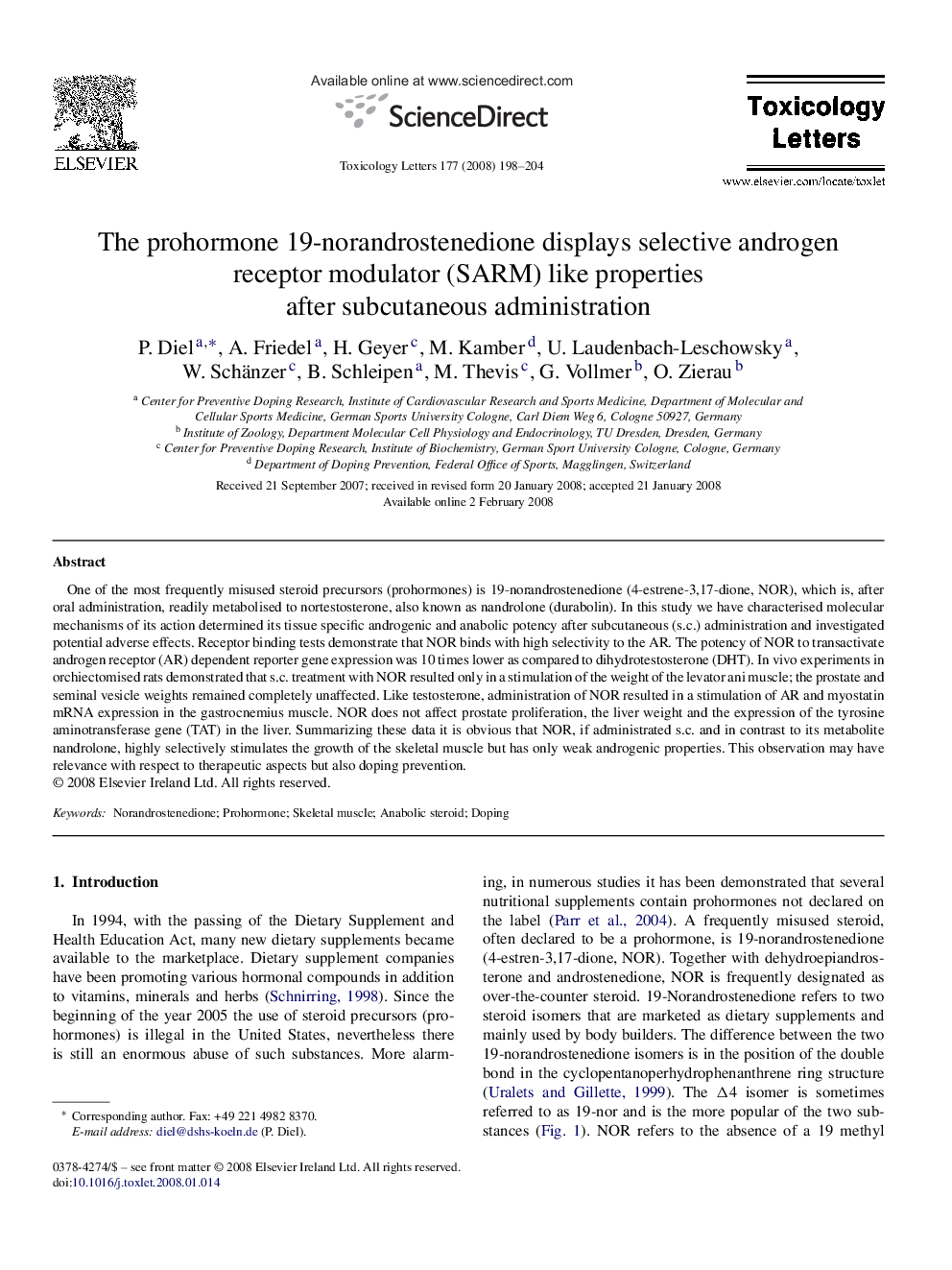| Article ID | Journal | Published Year | Pages | File Type |
|---|---|---|---|---|
| 2601597 | Toxicology Letters | 2008 | 7 Pages |
One of the most frequently misused steroid precursors (prohormones) is 19-norandrostenedione (4-estrene-3,17-dione, NOR), which is, after oral administration, readily metabolised to nortestosterone, also known as nandrolone (durabolin). In this study we have characterised molecular mechanisms of its action determined its tissue specific androgenic and anabolic potency after subcutaneous (s.c.) administration and investigated potential adverse effects. Receptor binding tests demonstrate that NOR binds with high selectivity to the AR. The potency of NOR to transactivate androgen receptor (AR) dependent reporter gene expression was 10 times lower as compared to dihydrotestosterone (DHT). In vivo experiments in orchiectomised rats demonstrated that s.c. treatment with NOR resulted only in a stimulation of the weight of the levator ani muscle; the prostate and seminal vesicle weights remained completely unaffected. Like testosterone, administration of NOR resulted in a stimulation of AR and myostatin mRNA expression in the gastrocnemius muscle. NOR does not affect prostate proliferation, the liver weight and the expression of the tyrosine aminotransferase gene (TAT) in the liver. Summarizing these data it is obvious that NOR, if administrated s.c. and in contrast to its metabolite nandrolone, highly selectively stimulates the growth of the skeletal muscle but has only weak androgenic properties. This observation may have relevance with respect to therapeutic aspects but also doping prevention.
